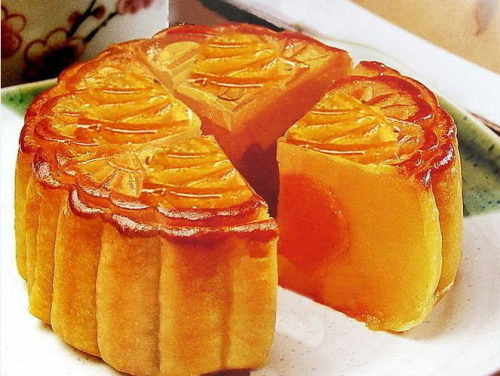[中秋节由来英文]中秋节的来历英文【1】 The joyous Mid-Autumn Festival was celebrated on the fifteenth day of the eighth moon, around the time of the autumn equinox(秋分). Many r...+阅读
关于中秋的由来用英文的简单一点不超过65字。不要网上摘
The Mid-Autumn Festival, also known as the Moon Festival, the Autumn Festival, the Midautumn Festival, the August Festival, the August Festival, the Moon Festival, the Moon Festival, the Moon Festival, the Daughter's Day, or the Reunion Festival, is popular among many ethnic groups in China and the cultural circle of Chinese characters. Traditional cultural festivals, It was on August 15 of the lunar calendar; Because of its value in the third half of autumn, hence the name, some places set the Mid-Autumn Festival on August 16.
中秋节的来历要英文的短一点
Mid-Autumn Festival originated from the Zhou Dynasty, the official naming of the Northern Song Dynasty, the Ming and Qing famous and the Spring Festival. Lunar August 15 is China's traditional Mid-Autumn Festival, "the most that year moonlight night, when Trinidad Here the people." For the Mid-Autumn Festival coincides with the semi-named after the San-Qiu, known as Tuan Yuanjie, or Xi, Zhongqiu Festival, such as Ba Yuejie. Related There are different theories about the origins of the Mid-Autumn Festival, according to expert research, in the three major traditional Chinese festival - Spring Festival, Dragon Boat Festival and Mid-Autumn Festival, the Mid-Autumn Festival formation of the latest. However, as with other traditional festivals, the Mid-Autumn Festival also has a long source of its history can be traced back to ancient times, the King Customs and autumn worship activities. There is a long time ago in ancient China's customs worship the moon, according to "Zhou" records, has been the Zhou Dynasty, "Qiu Ye Ying-cold", "Autumnal Equinox Yuzuki (Baidoa)," the activities of the Chinese mid-August, is the autumn grain harvest Of the people in order to thank the gods Hu You held a series of ceremonies and celebrations, known as the "Autumn reported." Mid-Autumn Festival season, has been cool not cold temperatures, high Qishuang days, on Long transit is the best season to watch the moon. Therefore, the festival was on the composition of the full moon will gradually been replaced by, the color gradually Tuiqu worship, which is inherited from the festive activities, and was given a new meaning
中秋节的来历英文版
Mid-AutumnFestival The joyous Mid-Autumn Festival was celebrated on the fifteenth day of the eighth moon, around the time of the autumn equinox(秋分). Many referred to it simply as the "Fifteenth of the Eighth Moon". This day was also considered as a harvest festival since fruits, vegetables and grain had been harvested by this time and food was abundant. Food offerings were placed on an altar set up in the courtyard. Apples, pears, peaches, grapes, pomegranates(石榴), melons, oranges and pomelos(柚子) might be seen. Special foods for the festival included moon cakes, cooked taro(芋头)and water caltrope(菱角), a type of water chestnut resembling black buffalo horns. Some people insisted that cooked taro be included because at the time of creation, taro was the first food discovered at night in the moonlight. Of all these foods, it could not be omitted from the Mid-Autumn Festival.
英语说明中秋节的由来
The Mid-Autumn Festival is one of the two most important holidays in the Chinese calendar (the other being the Chinese Lunar New Year), and is a legal holiday in several countries. Farmers celebrate the end of the summer harvesting season on this date. Traditionally, on this day, Chinese family members and friends will gather to admire the bright mid-autumn harvest moon, and eat moon cakes and pomeloes together. It is also common to have barbecues outside under the moon, and to put pomelo rinds on one's head. Brightly lit lanterns are often carried around by children. Together with the celebration, there appear some special customs in different parts of the country, such as burning incense, planting Mid-Autumn trees, lighting lanterns on towers, and fire dragon dances. Shops selling mooncakes, before the festival, often display pictures of Chang'e, floating to the moon.
延伸阅读:
关于中秋节的诗句最好是简单一点的1、今夜月明人尽望,不知秋思落谁家。——出自唐代王建的《十五夜望月寄杜郎中》 译文:今天晚上人们都仰望当空明月,不知道这秋思之情落在了谁家? 2、但愿人长久,千里共婵娟。——...

关于中秋的由来用英文的简单一点不超过65字。不要网上摘The Mid-Autumn Festival, also known as the Moon Festival, the Autumn Festival, the Midautumn Festival, the August Festival, the August Festival, the Moon Festiv...
中秋节的由来英文介绍The joyous Mid-Autumn Festival, the third and last festival for the living, was celebrated on the fifteenth day of the eighth moon, around the time of the autum...
怎么用50字介绍中秋节的由来“中秋”一词,最早见于《周礼》。中秋节始于唐朝初年,盛行于宋朝,至明清时成为中国传统节日之一。 中秋节,又称月夕、秋节、女儿节等,是流行于中国众多民族与汉字文化圈诸国的传...

圣诞节的由来英文中文简短一点圣诞节来历: Christmas also referred to as Christmas Day or Christmastide, is an annual holiday celebrated on December 25 that marks and honors the birth of Jesus...
关于中秋节的由来至少50字你好,关于中秋节的起源,说法较多。中秋一词,最早见于《周礼》,《礼记·月令》上说:“仲秋之月养衰老,行糜粥饮食。” 一说它起源于古代帝王的祭祀活动。《礼记》上记载:“天子春朝...

怎么用50字说明中秋节的由来怎么用50字说明中秋节的由来,中秋节日记50字:“中秋”一词,最早见于《周礼》。中秋节始于唐朝初年,盛行于宋朝,至明清时成为中国传统节日之一。 中秋节,又称月夕、秋节、女儿节等...

中秋节的由来英文说明中秋节的由来英文说明,英语说明中秋节的由来:The joyous Mid-Autumn Festival, the third and last festival for the living, was celebrated on the fifteenth day of the e...
用英语说明重阳节的由来简单一点的!太难的我就不会读了求用英语说明重阳节的由来简单一点的!太难的我就不会读了求,重阳节的来历简短:The 9th day of September in the lunar calendar is "the Chinese Chong Yang Festival" and a happ...





